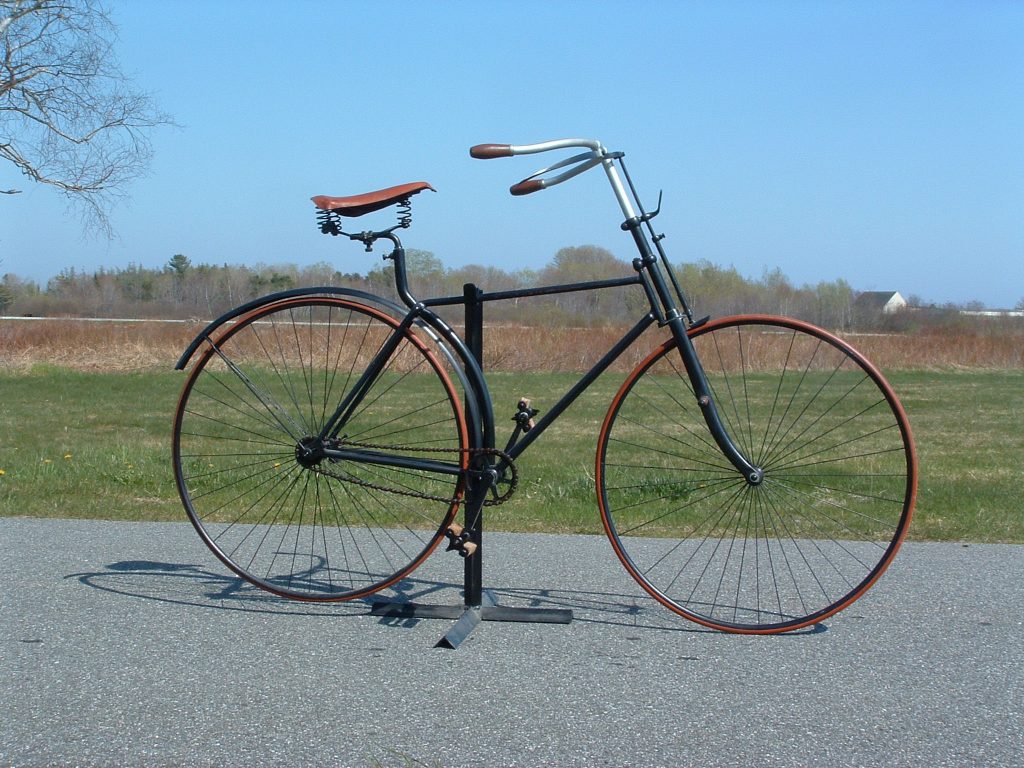Empire Dwarf Safety Roadster








Description
As the high wheeler gained momentum in the 1880s, folks often referred to them as “ordinaries” despite the fact that few people could ride the oversized, awkward contraptions. Many saw the ordinary bicycle as dangerous and a menace to both riders and the public. In fact, the link between bicycles and danger became so embedded in the public consciousness that when a new design debuted in the middle of the decade, it was marketed as a “safety” bicycle…
As the high wheeler gained momentum in the 1880s, folks often referred to them as “ordinaries” despite the fact that few people could ride the oversized, awkward contraptions. Many saw the ordinary bicycle as dangerous and a menace to both riders and the public. In fact, the link between bicycles and danger became so embedded in the public consciousness that when a new design debuted in the middle of the decade, it was marketed as a “safety” bicycle to differentiate it from the menacing ordinary.
The first safety bike was built in England in 1885, but American bicycle makers did not see the benefit compared to high wheelers. It wasn’t until European safety bicycles arrived on American shores in 1887 that manufacturers saw that customers were interested in the new design.
To modern observers, there is nothing remarkable about the safety bicycle. The form and function remain fundamental to the bicycles produced and used today. The major innovation in the 1880s was the addition of a chain drive — two gears with teeth connected by a chain — instead of attaching the pedals directly to the wheel. With the chain drive, the speed came from the gears rather than the wheels. To this day, bike gears are still measured in terms of what size high wheeler it would mimic. This allowed the wheels of bicycles to shrink back to a size more manageable for the average person. Instead of pairing a 60-inch wheel with a 13-inch wheel, bicycles could have two 24-inch wheels.
The other major innovation that made the safety bicycle more accessible to the masses was the development of the air-filled tire. Until the late 1880s, wheels were wood or metal rolling directly on the road; solid rubber tires were introduced mostly to protect the wheels. Regardless of the material, cyclists felt every bump, rut, and rock they hit. In 1888, John Boyd Dunlop, a Scottish veterinarian, found a solution to create a smoother ride when he wanted to make his son’s tricycle go faster. Using Arbroath sailcloth coated with India rubber, he crafted the first commercially successful pneumatic tire. When filled with air, the pneumatic tire travels farther than a solid wood or metal tire using the same energy. Dunlop patented them and formed the Dunlop Tire Company in 1889. However, the patents were voided in 1892 when it was discovered that Robert William Thomson patented a pneumatic tire in 1847 using leather instead of sailcloth. Despite losing the patent, Dunlop’s tires became popular among bicyclists and, eventually, motorists.
The combination of chain drive and pneumatic tires revolutionized cycling. As production increased, prices dropped. Mass production and competition among the 300 American bicycle manufacturers led the average price to drop from $150 to $75,with an estimated 500,000 produced in 1895. As safety bicycles rose in popularity, the value of high wheelers crashed during the same year from $150-$300 to a mere $10.
Cyclists riding these new bikes did not sacrifice speed for security. Using a safety bicycle in 1894, American racing cyclist John S. Johnson broke the speed record for a mile with a time of one minute and 35 seconds. Not only was this a minute faster than the high-wheeler record, it was also a tenth of a second faster than the mile record for horses.
